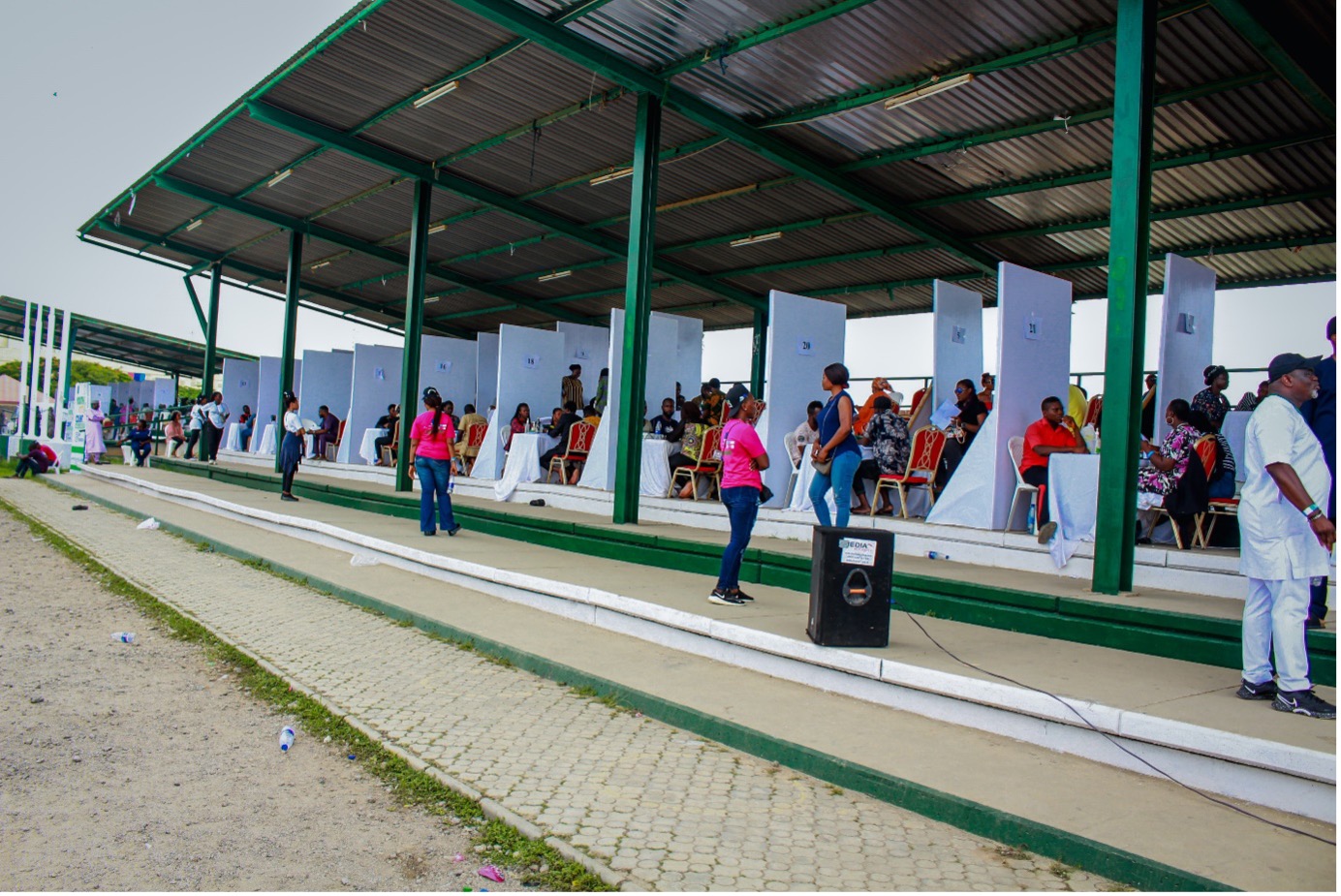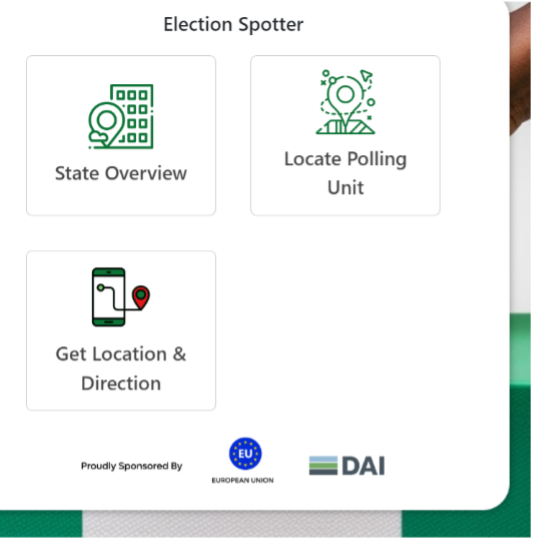Let us know what type of content you'd like to see more of. Fill out our three question survey.
The Power of Geospatial Tools for Improving Election Management and Voter Participation: Lessons from Nigeria
This post is one of a series of posts on Digital Democracy.
Sep 19, 2024
Nigeria is Africa’s most populous country and one of the world’s largest democracies. In February 2023, millions of Nigerians went to the polls in the country’s seventh election since the return to democracy in 1999. Nigeria’s 2023 election was also its most technologically advanced yet, a trend that is not unique to Nigeria alone. Digital technologies are increasingly being used in elections across the globe—from biometric voter registration and identity verification to the digitalization of voter registries. Digital tools can increase efficiency, improve transparency, and help share information with voters.
Since 2022, in collaboration with Nigeria’s Electoral Management Bodies, DAI has been supporting the Independent National Electoral Commission (INEC) through the European Union Support to Democratic Governance in Nigeria (EU-SDGN) program. DAI supports the INEC with new technologies to improve the management of Nigeria’s electoral system. In this context, the project supports foundational electoral institutions with digital transformation to ensure citizens continue to trust the democratic process. GIS tools—used to map polling units and to inform the program’s voter education tools—have become a core part of how the program achieves this goal.

Eligible voters register to collect their permanent voter cards in Lagos, Nigeria, at the card collection drive and Youth Vote Count campaign, implemented by INEC, DAI, and the European Delegation. Photo: EU-SDGN.
Using Geospatial Tools to Support Elections Coordination and Management
Due to the rapid growth of the Nigerian population and the subsequent increase of the electorate to more than 90 million, INEC had to create 57,000 new polling units in preparation for the 2023 election. However, despite the existence of these new polling units, there is still a high number of over-populated polling units with as many as 5,000 voters, and many underpopulated with as few as 20 voters. To provide data for improved planning and decongestion of polling units, DAI conducted a large operation across all 36 states, helping INEC capture missing GIS data for 87,000 polling units.
Currently, the EU-SDGN program is leveraging this new GIS data to develop an interactive map that will display electoral data such as disaggregated data of registered voters in each polling unit. This data can then be used by INEC for more effective election logistics planning, real-time monitoring of election processes, efficient results collation, improved data analysis of voter trends, and improved transparency in reporting of election-related activities. The interactive map has been piloted in three states so far, and DAI is preparing to pilot in an additional two states to prepare for upcoming elections.
Leveraging Technology for Voter Education
Given the changes to polling units, there was a clear need to inform migrated voters on the precise location of their polling units. The EU-SDGN program has a suite of voter education initiatives, which use social media, TV and radio, and in-person outreach to share valuable election-related information, encourage voters to participate in the elections, and help them feel knowledgeable enough to do so with confidence. The DAI team created Election Spotter, a mobile-friendly website created to support potential voters to find their local polling units. Users can enter their state, local government authority, and registration area to receive a list of local polling units and a map of exactly where the polling units are. Voters can also find valuable state-wide information including numbers of local government authorities and where the state’s INEC offices and collation centers are. To date, more than 14,000 users have visited Election Spotter.
The program also used Facebook and WhatsApp to reach potential voters across Nigeria with election-related information. Although the INEC website had created valuable content answering FAQs around elections, many users did not access this resource. The EU-SDGN recognized that WhatsApp and Facebook were highly used by target audiences and decided to repurpose the FAQ content to make it readily accessible. The campaign reached nearly 2 million people across Nigeria.

What’s Next?
Through these complementary initiatives, the EU-SDGN program seeks to make improvements to the efficiency and effectiveness of elections, with a focus on improved transparency and voter participation. The next phase is to migrate all election tools to INEC servers and build the capacity in the various departments to fully utilize the tools, with the aim for the tools to be fully integrated and operational for the upcoming Edo and Ondo Governorship Elections. DAI will also deploy the updated version of the Election Spotter app, which contains polling unit-related data for Edo and Ondo. The new app provides information on the number of voters, permanent voter cards collected, voter gender and disability status, and other information INEC needs for the planning of its logistics.